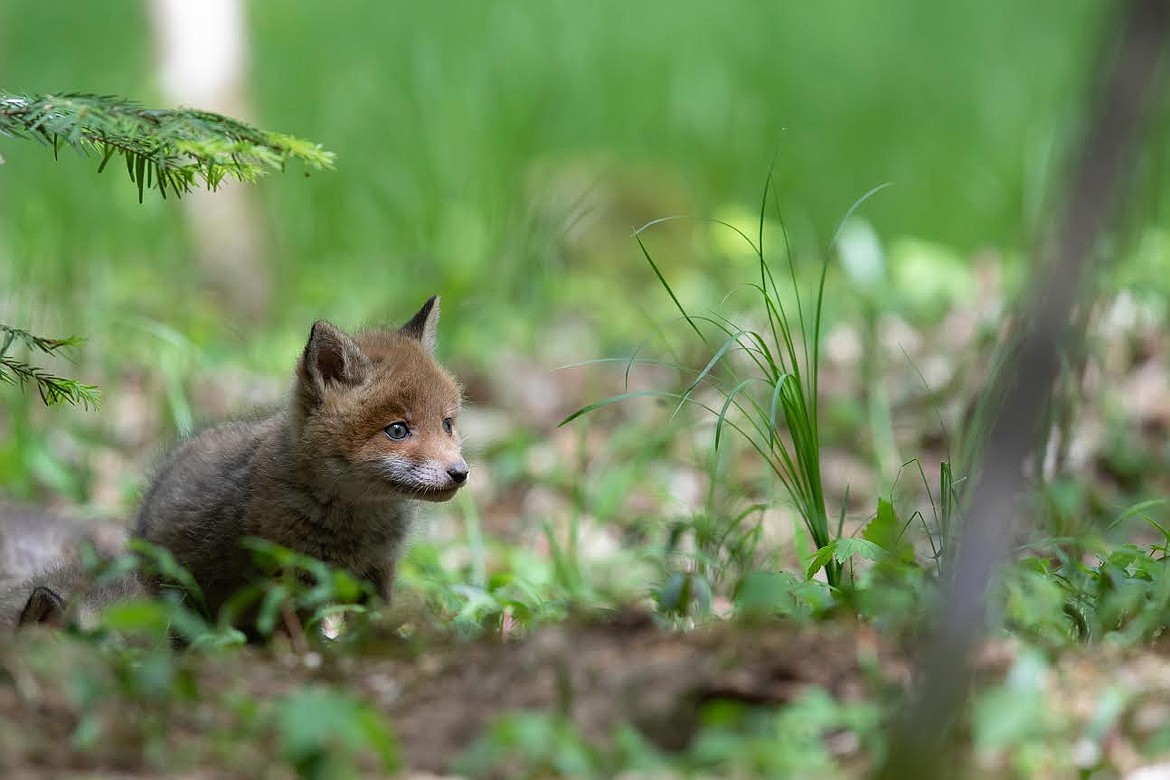Young wildlife, just leave them alone
Spring and summer have always been my favorite time to observe wildlife.
The weather is generally agreeable, and bird and animal numbers are at their optimum levels. Another advantage is the fact that mothers and fathers are busy seeking or catching food for the young critters, which increases the likelihood of seeing them.
One other consideration is the appearance of many species.
A few weeks ago I was exploring when a cow elk rose from her bed in a timber cut that was lush with grass.
She stood there for the briefest of moments before disappearing over a rise. Her reddish coat seemed to glow against the backdrop of green grass.
Elk are certainly a majestic animal in fall with their antlers free of velvet and polished to do battle, but the summer appearance of the animals has always been the true eye-catcher for me.
Bulls’ antlers are covered in velvet which carries the blood that will make them grow, up to an inch a day.
One of the other treats of the season is watching young animals and birds.
An encounter with a small herd of cow elk and their calves last summer remains one of my more memorable days. When the mothers became aware of my presence, their aggravation was immediate and noisy.
As they shepherded their young back up the draw, their distress calls meant danger was near to any other elk in the valley.
Another encounter included a black bear cub near a dirt road high in the Jewel Basin. The little ball of fur was alone, but mom was surely nearby.
Unfortunately, some go beyond a role of observation.
It’s not uncommon for well-meaning people to pick up deer fawns or other wildlife.
It’s one problem Montana Fish, Wildlife and Parks deals with every year. Those who believe they are “saving” an orphaned animal may be ultimately dooming it to euthanization.
The agency no longer accepts, holds or rehabilitates moose, deer, elk and most other animals.
However, it’s important to understand that wildlife care for their young much differently than humans. They have strategies to provide the highest chance of survival for their young.
One strategy that some species, particularly those species that are more commonly seen as prey (deer, rabbits, birds) use is to distance themselves from their young for many hours at a time.
This helps to keep predators away from their young. For example, fawns are born without a scent and it is safer for them if their mother, who has a scent, is not nearby. This also can potentially distract a predator into focusing on the doe vs. their offspring.
Wild animals are more likely to thrive better in the wild where they have plenty of natural habitat (food, water, shelter, space) and thrive better with other wildlife than with humans, who they consider an apex predator. Nature provides them the best options for survival and a better quality of life.
The potential to spread wildlife disease is also a good reason to leave young wildlife alone. Baby ground squirrels, raccoons and rabbits can carry zoonotic diseases, which means diseases that are infectious for humans. Examples include plague, hemorrhagic diseases and tularemia.
If you see a baby animal, whether a goose or a grizzly, keep your distance and leave it alone. Handling baby animals can be dangerous, and usually once young animals are picked up by people they can’t be rehabilitated.
Fish, Wildlife and Parks have a number of suggestions for those who encounter baby animals.
- Leave it there. It’s natural for deer and elk to leave their young alone for extended periods of time.
- Control the dog. Keep your dog under control, especially in the spring when newborn wildlife is most vulnerable. Pet owners can be cited and dogs that harass or kill wildlife may by law have to be destroyed.
- Keep cats indoors. Many birds nest and feed on the ground. Young birds are also learning how to fly, making them vulnerable to cats. The bacteria in cat saliva are toxic to birds, so even if a cat does not immediately kill a bird, its bite often leads to infection and death.
- Keep in mind it is illegal to possess and care for a live animal taken from the wild.
As a wildlife agency, FWP’s priority is to keep wild animals wild. When people keep and raise elk, deer or other animals, it habituates wildlife to humans, potentially causing problems once released back into the wild.
Should someone bring a deer or elk to FWP, they'll be asked to take the animal back to the site where it was found. If the animal can't be returned, it may need to be humanely euthanized.
Simply put, all we really need to do is observe wildlife and enjoy them.

